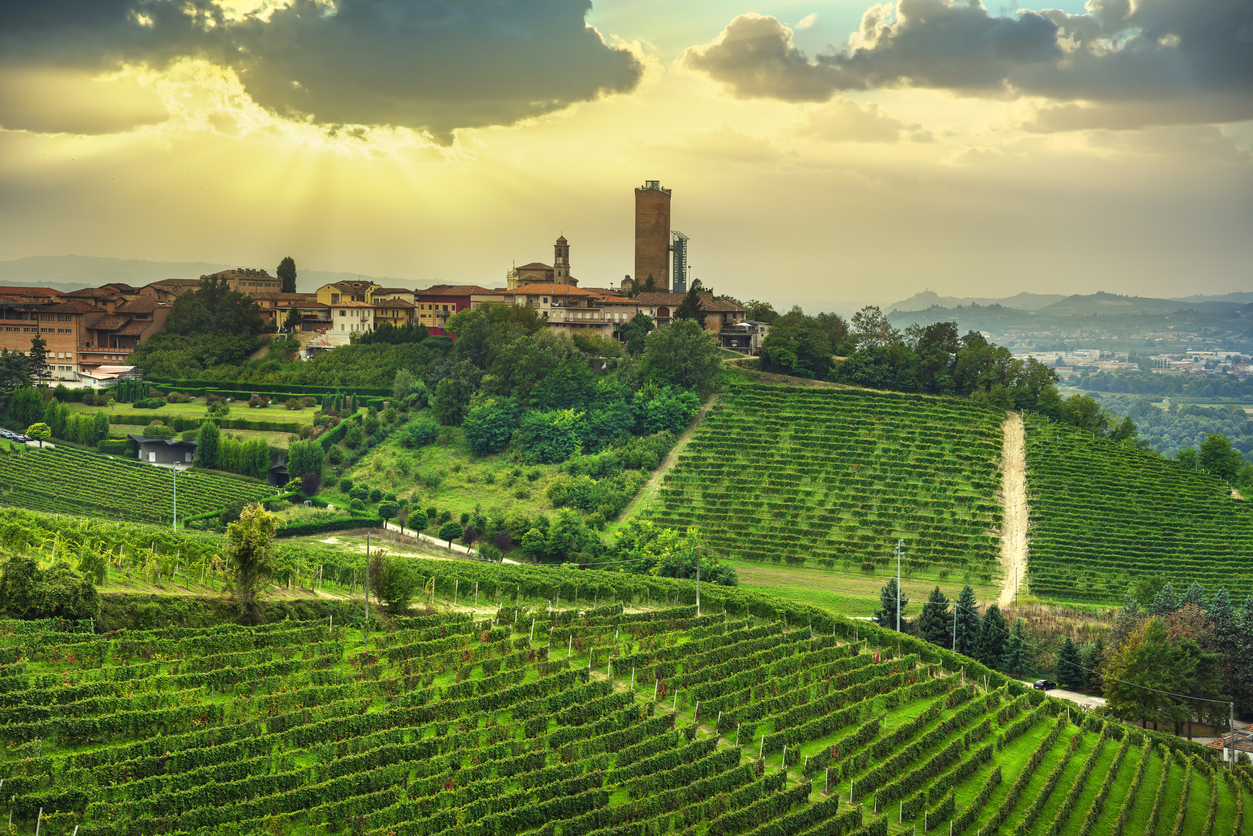
In the Northern Italian region of Piedmont, Nebbiolo takes center stage. Barolo and Barbaresco tend to steal the spotlight as some of the most sought-after wines in the world, but—newsflash—they’re not the only red wines grown on those slopes.
Plus, not everybody can afford to drink Barolo every day—of course, if you can, we salute you! But for the rest of us, barbera (pronounced bar-BER-ra) is a delightful find at a fraction of the price.
The Wines of Piedmont
Piedmont, also called Piemonte, or The Langhe, is Italy’s second-largest region, located at the foot of the Alps, in and around the towns of Asti, Alba, and its capital, Turin. The wines are made differently here; there are relatively few grape varieties, and almost all are bottled as single varietals. For whites, you’ll find gavi, arneis, favorita (a clone of pinot gris), and moscato (muscat). For reds, it’s dolcetto, barbera, and nebbiolo.
Nebbiolo is the more serious of the Piemonte reds, making bold, tannic, complex, and long-lived red wines. Dolcetto is the juvenile—best in its youth, with an exuberant personality.
Barbera falls somewhere in the middle, and as most middle children will attest to, it’s easy to get overlooked for one’s older or younger siblings.
Some winemakers of the region like to say that barbera is what they drink when they are waiting for the Barolo (or Barbaresco) to mature, but in truth, it’s an easy-drinking wine that’s full of character, easy to pair with all kinds of food, and doesn’t need a special occasion to enjoy.
What Does Barbera Taste Like?
Typically, barbera is medium-bodied, relatively low in tannins, and high in acidity, but this largely depends on how it’s made and where it’s grown. The higher up the mountain it’s grown, the higher the acidity and tannin will be. When aged in oak barrels, it takes on a softer character with a velvety mouthfeel, redolent with earthy, plummy aromas and distinct flavors of cherry, blackberry, and raspberry fruit on the palate.
Barbera is at its best when it’s picked early and drunk in its youth. If the grapes are left to hang on the vine for too long, the resulting wine can become too densely laden with dried and stewed fruit flavors, almost tending towards a cherry liqueur character that is not considered a desirable quality.
Foods To Pair with Barbera Wine
One only has to look at the cuisine of The Langhe to find the best pairings for barbera. If you enjoy truffles (not the chocolate kind), this is where barbera truly shines. Try a truffled risotto with shaved parmesan, braised rabbit gnocchi, or enjoy with hard, salty cheeses and charcuterie.


